Weird traditions around the world
From the crucifixions in the Philippines to the ancient European and Asian rituals, these are weird traditions around the world.
All over the world, people have celebrated ancient rituals, that can now be seen through the eyes of a highly scientific and materialistic world as “weird”, “creepy” or too “exotic”. Some of them are, however, rooted in ancient pagan religions that got mostly wiped out after the passage of Catholicism and Christianity, others are a replica of certain biblical passages, while others, celebrate certain magical powers…
There are are some of the most fascinating “weird traditions around the world”
Ric Gazarian and the Sak Yant festival
A series of shrill screams punctured the humid air. A chill traced my spine. I had taken a knee and curled my body in a ball, protecting my camera. Several men were running toward me in a full sprint. It was last March, and I was at the annual Sak Yant Festival at Wat Bang Phra.
Wat Bang Phra is a Buddhist temple located about 50 km west of Bangkok. Sak Yant is an ancient form of tattooing that traces its roots to Cambodia. These tattoos consist of magical, ancient Khmer scripts that bestow the recipient with mystical powers, such as being impervious to bullets, based upon the specific tattoo.
Up to 1,000 plus Thais gather over two days to receive one of these revered tattoos, many given by the monks from the temple. During the festival approximately 10,000-15,000 people gather at Wat Bang Phra early Saturday morning for the festival.
As the monks chant from the stage, the Sak Yant tattoos are “charged” with their special powers. Many of the recipients of the Sak Yant tattoos fall into a trance as their tattoos are “charged” and maniacally rush the stage in the form of an animal such as a crocodile or tiger.
The unique Sak Yant festival is a must see event if you can manage to be in Bangkok in March. You will not be disappointed.
Aileen Adalid and the Carnival in Binche – Belgium
The Carnival of Binche in Belgium is one of UNESCO’s “Masterpiece of the Oral and Intangible Heritage of Humanity” and it’s quite a bizarre kind of thing.
Celebrations start weeks before Ash Wednesday, but the main part of this carnival starts on ‘Shrove Tuesday’ wherein the oldest and principal participants—the 1,000 young and old males: ‘Gilles’—would dance from 4AM to late hours to ward off evil spirits with their sticks.

The Gilles are very notable for their looks: wax masks, vibrant costumes (using the colors of the Belgian flag with the suits stuffed with straw to make them look like they have a hunched back) and wooden clogs. Apparently, it’s quite an honor to become a part of this group and almost every man in Binche aspire to become a part of it.
When they reach the town hall in the afternoon, they take off their wax masks; some of the Gilles will wear large hats with ostrich feathers. They will then each carry a basket full of blood oranges which they will throw to the crowd and sometimes directly at individuals as they continue marching through the town! These oranges are considered as ‘good luck charms’ as they are gifts from the Gilles, and everyone would want to be thrown at! (No one dares to throw it back since it’s considered an insult). Naturally, this kind of act would often damage properties, but it’s a long and festive activity that people look forward to! Imagine that!
Brita Melissa and the Maximón – the spiritual and religious awakening of Guatemala
He is a doll to the tourist and a god to the locals. He is a travelers treasure as well as his value to the Guatemalans. He receives gifts and in return he gives advice and predictions and can only be found in a few towns in the highlands of the country. Where he first come from is a mystery, but who is he?
Maximón, also named San Simón by the Spanish, is dressed in clothes (a mix of Guatemalan colors and European patterns), given cigarettes and food – he even drinks alcohol. In return he functions as a love predictor, he forgives sins and promises to help financially. If you are not a catholic in Guatemala, or a believer in the Mayan world, this is the part were you start to laugh. Maximón is dressed differently in each town, but his main clothing consists of scarfs, felt hat and a cigar in his mouth. The cigar is there due to his name which is the Mayan word for tobacco. Nothing more complicated or historic then that.
I found Maximón once at Lago Atitlan, the largest lake in Guatemala, in 2010. He seemed to me like every other person in the room, a bit ridiculous. He was even behind bars as a prisoner so no-one could directly touch him. After a while, watching how people sat down in front of him, setting small candles on the floor and praying, you could feel the seriousness in the dark room. Some had even come a long way to meet him. Definitely the most unique and interesting culture-figure I have seen and way more interesting than any church. Maximón would catch the interest of any non-religious person.
Kach Howe and Penytensia in the Philippine’s Holy week
I’ve never been to this place in the Philippines, but one of our readers attended this traditional festival in Cutud, Pampanga. As you may know, the Philippines is highly devoted Catholic country and there are many important religious traditions which are carried once a year during Holy Week.
A devotee promises to do sacrifices for his faith by carrying out a vow through the ritual of nailing themselves to the cross on Good Friday. First, all of the devotees will line up under the sun for hours whipping their backs, thereby imitating Jesus Christ’s suffering.
One devotee, who is designated as Christ, is carrying a wooden cross from the church all the way to the hill, while being flanked by men dressed as Roman soldiers.
Once on the hill, men are placed upon three crosses and have nails driven though their palms, where they will be left to remain hanging for about ten minutes before they can be taken down.
Follow Kach Howe on Facebook, Twitter and instagram
Lyndsay Cabildo and the Thaipusam Festival
Thaipusam Festival is a Hindu celebration of their faith celebrating good over evil, their deities particularly Parvati, who gave his ‘spear’ to Murugan to kill the Evil.
Commonly celebrated every full moon of the Tamil month where volunteer participants in the ritual will eventually get ‘speared’ in different ways and I have a close encounter to one person doing it at the Batu Caves grounds during the same week of the big celebration in Kuala Lumpur, Malaysia.
I was lucky enough that the members of Tamil community have let me cover the process closely and I was beside a local network’s camera guy. It was difficult to watch but it seemed like the participant didn’t feel any pain during the process which was unbelievable.
I do have a full story of the experience on: Batu Caves
Margherita Ragg and the Mamuthones
When you think of Sardinia, you imagine turquoise sea and sunny beaches. Not much is known of the mountainous centre of the island, cradle of Sardinia’s traditional culture, still largely mysterious. A great example of this are mamuthones and issohadores, masked figures originating from the village of Mamoiada in Barbagia, in central Sardinia.
These characters perform at all of Mamoiada’s festivals, about six or seven times a year, dancing and parading in the street. Mamuthones wear black wooden masks, shaggy woolen vests and have bells on their back. They proceed with a slow, imposing gait, looking like animal spirits.
In contrast, Issohadores wear red tops and white trousers, and carry a rope that they use to ‘catch’ pretty girls from the audience, and skip around, looking happy and playful compared to dark mamuthones.
The origins of Mamuthones and Issohadores are unknown; they’ve been in town as long as anyone remembers, and even scholars are baffled by their origin.
We visited Mamoiada during the St Anthony festival in mid-January, when the characters walk around among bonfires lit to ward off the cold winter and welcome spring. The parade happens in total silence, save for the clang of the bells on the Mamuthones’ back and the skips of the Issohadores. When it started to snow, I felt as if I was walking in an ancient legend.
Anne Steinbach and the Nyepi in Bali
I woke up early in the morning. Not from the sound of the chickens singing as usual. No, from the sound of nothing. It was quiet. No birds, no geckos, no motorbike. Absolutely no sounds at all. And this on the island of Bali in Indonesia, where the brumming sounds of scooters passing by, the Gamelan music, the ceremony music and animal sounds belong to daily life.
It is Nyepi and I have no idea what I am expected to do today.
Bali is a Hindu island in Muslim-dominated Indonesia and, as I knew before, things work a little different here than in the rest of the world. The strong belief in bad and good causes, bad and good gods and the belief in keeping a good balance in life is what dominates daily life in Bali.
Nyepi is one of the things that is that different that you simply have to love it. It is basically the new years celebration for Hindus in Indonesia. The night before Nyepi streets a crowded with people watching the ceremony of statues resembling the gods walking through the streets. Once the “fight” between the good and the bad gods is over, it is time for Nyepi to start.
The basic idea is the following: the night before Nyepi is when the bad gods come to Bali. Thus, the good gods fight against them. In order for the bad gods to not come back to the island of Bali it is important that the entire island seems to be dead.
Therefore, nobody is allowed to leave the house, to buy anything in the supermarket or to use electricity or fire. You are also not allowed to work or to party. The very strict Hindu would sit at home and meditate all day. All other people are happy to get a day of pure sleeping once a year.
Also, beware that there is police checking upon everybody. It is the so called religion police – “normal” people walking around the streets, checking whether nobody turned on the light or is cooking in the kitchen.
Nyepi lasts from 6 in the morning to 6 the next morning. The day after Nyepi is used to walk over to friends and family and ask for forgiveness, in order for everybody to start clean and healthy into the new year.
DO YOU KNOW EVEN MORE WEIRD TRADITIONS? WHICH ONES DID WE MISS? LET US KNOW ON THE COMMENT SECTION BELOW!






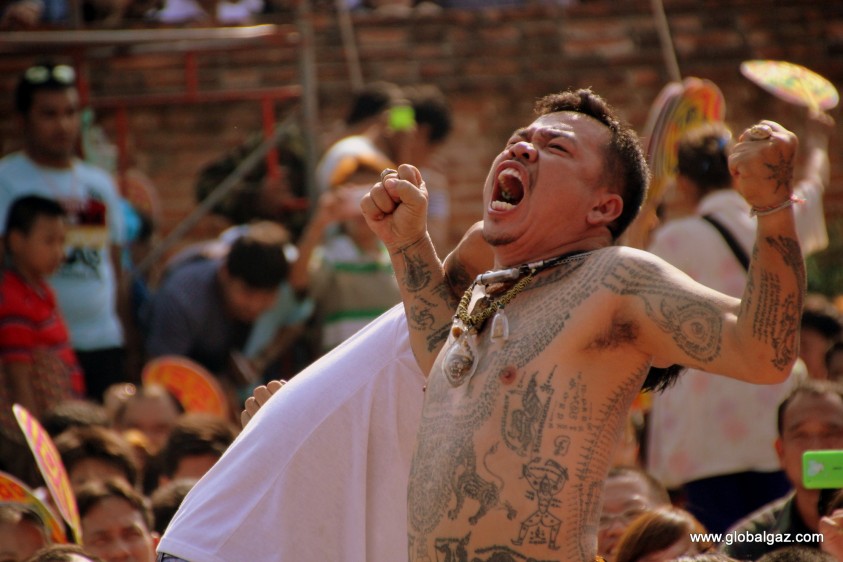

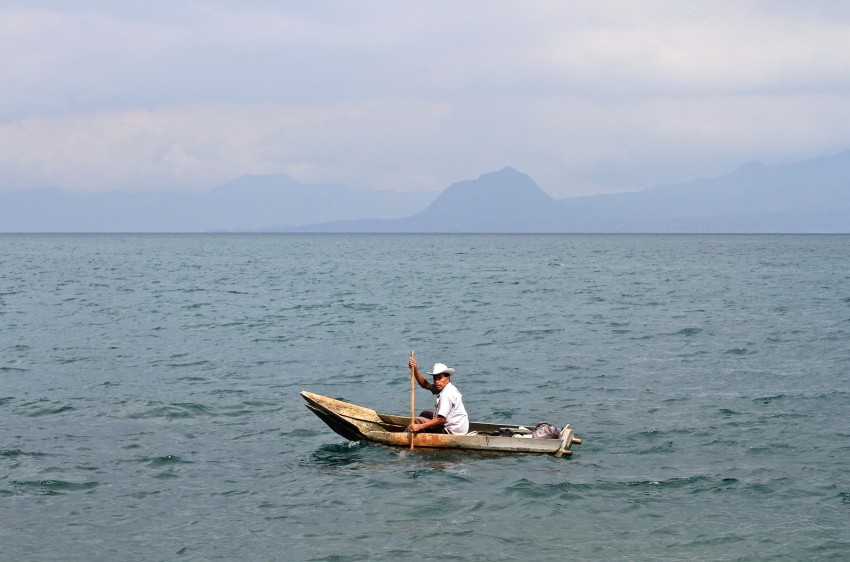



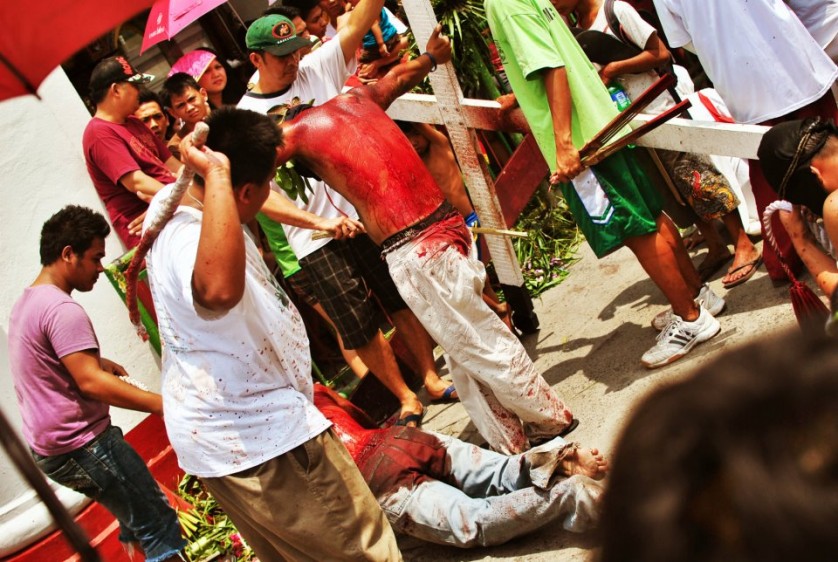




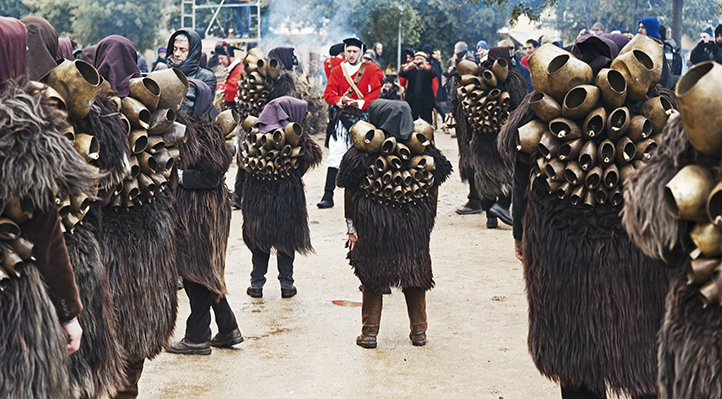
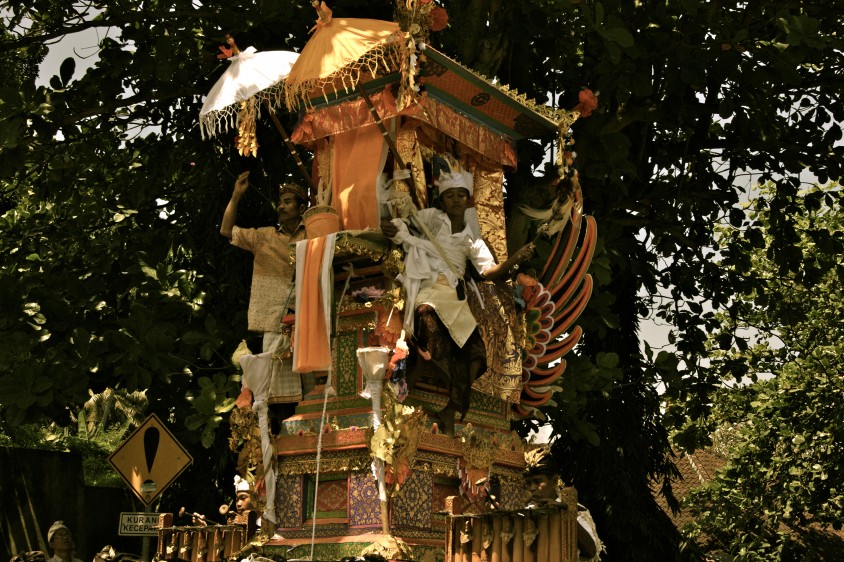







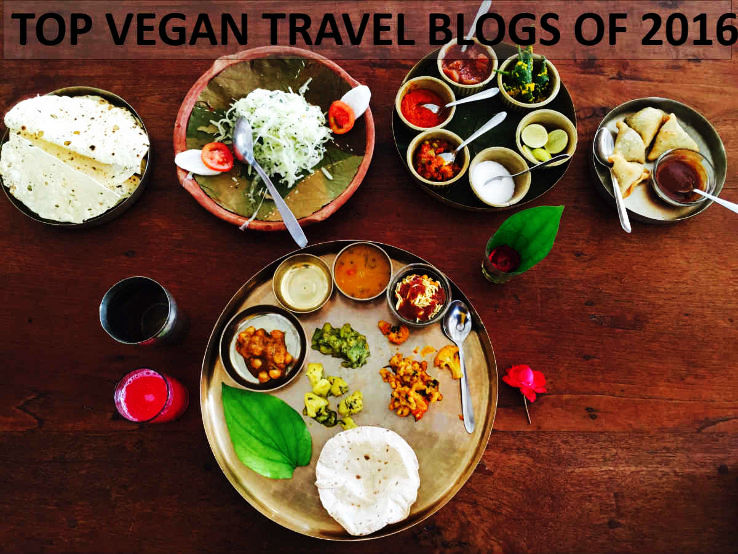




 English
English
Wow!! What a fascinating post!!! It really made me want to visit those places to see the ceremonies by myself! Thanks so much for sharing! 😀
I almost attended the one in Thailand in 2013, but then plans changed. I hope I can check some of them out in the near future. That’s what makes the world more interesting: the cultural differences.
Awesome compilation Yara! Thanks for the spot and be safe always! <3
We saw Thaipusam in Singapore and it was quite interesting. It’s interesting to see that most of the traditions around the world are connected with religion, not that I’m surprised about that, just fascinated!
Seems like religion is still a huge part of people’s lives. It’s fascinating how diverse people’s believes can be, but at times, it’s also creepy the length people go in certain rituals.
I’ve stayed many months in Bangkok and I’ve not heard of the Sak Yant festival before. It does look fascinating, I enjoy going around the temples in Thailand and the Buddhist way of life. The whipping and crucifixion look far too painful!
These are fascinating! Great list Would love to see one of these in person one day.
Would love to see one of these in person one day.
Me too, these type of things is what makes traveling so interesting!
Vegetarian Festival in Phuket is really interesting too – participants climb ladders made of razor blades, poke swords through their cheeks, other self-mutilation…